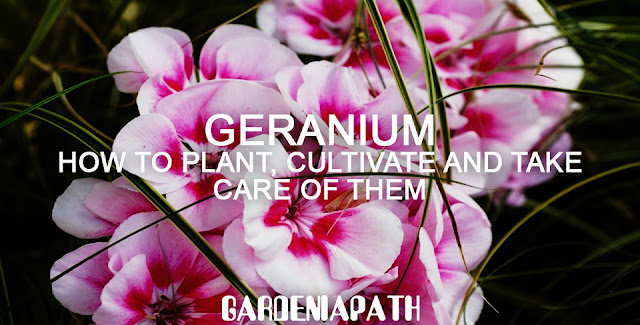Geranium planting : Geraniums are a long-time favorite of gardeners. They are easy to grow, colorful and emit a nice scent. Here's how t...
Geranium planting: Geraniums are a long-time favorite of gardeners. They are easy to grow, colorful and emit a nice scent.
Here's how to grow geraniums in your home and garden!
Note: This page is about plants of the genus Pelargonium, commonly known as geraniums or storks. Plants of the genus Geranium are also commonly used in gardens, but are usually called sturdy geraniums or cranesbill.
Although they can be kept outdoors during the hottest part of the year, geraniums are usually kept indoors for the winter. If they have enough light, they can bloom indoors all year round.
Geranium or pelargonium? Don't be mistaken anymore
Generally, flowering annual perennial plant, fragrant, native to South Africa that grows in sunny climates.
And, this star of balconies, blooms from May until December and beautifies terrace, bed, border or garden.
The continuation here : Pelargonium or Geranium Often Confused!
More here : Pelargonium or Geranium Often Confused!
Geranium plantation
When buying geraniums, pay close attention to color and size. Healthy leaves will not have any discoloration on or underneath and the stems will be strong, not irregular. Also be sure to avoid any plant with obvious signs of pests.
Place plants in pots with drainage holes to prevent root rot.
Use well-drained soil (not heavy clay soil) when planting in pots. Geraniums do not like to stay in wet, compacted soil.
For maximum flowering, place the plants in a place where they will benefit from 4 to 6 hours of sunshine.
Geranium maintenance
Allow the soil to dry to some extent between waterings, then water thoroughly.
During the winter, water much less, but don't let the roots dry out completely. Geraniums work best when they are given a dormant period during the winter months when they use less water and do not grow much.
- To encourage flowering, dead flowers are removed.
- To encourage bush growth, pinch the stems.
- During the months of active growth, fertilize every 2 weeks. Use a half-concentrated water-soluble fertilizer. Do not fertilize in winter.
- Geraniums can be repotted as needed in the spring to be refreshed.
Geraniums in winter
- They should not have to support large masses of leaves in the low sunlight environment they are about to enter.
- Keep a few stems as rooting cuttings, an easy way to propagate your plants.
- Transplant the "mother plant" into the smallest pot possible, but large enough to fit the roots, using ordinary potting soil.
When new shoots appear, cut off all old leaves.
- Water only when the leaves show signs of falling and only provide small amounts. Do not fertilize or feed the plants. It is essential that the plants rest.
- Once the warm weather has returned and any danger of frost has passed, put the plants outside and transplant them into the garden or pots as you wish.
- Geranium plantation: Disease and pest
- Common problems can be low light or too much or too little water. Leaves will yellow to indicate that you are watering too little or too much.
Geranium Planting: Cuttings
- 1 - Using a clean, sharp knife, make an oblique cut 10 cm below the end of the stem, above a node where the leaves emerge. Cut the cut just below a node. Remove all buds, all but two or three leaves, and the leaf-shaped stipules at the base of the leaf stems.
- 2 - Roll the cut stem in newspaper or put it in the shade for 24 hours, so that the cut end heals and does not rot.
- 3 - Put the stem in a damp rooting medium pot and store it in a warm and shady place for 2 days. After that, give it some indirect sunlight. Moisten the medium only if necessary.
Further information :
- For minor cuts, apply crushed geranium leaves to stop bleeding.
- In the language of flowers, scarlet geranium means stupidity.
- Geraniums are known to be toxic to Japanese beetles, so you won't have to worry about these annoying pests.

No comments